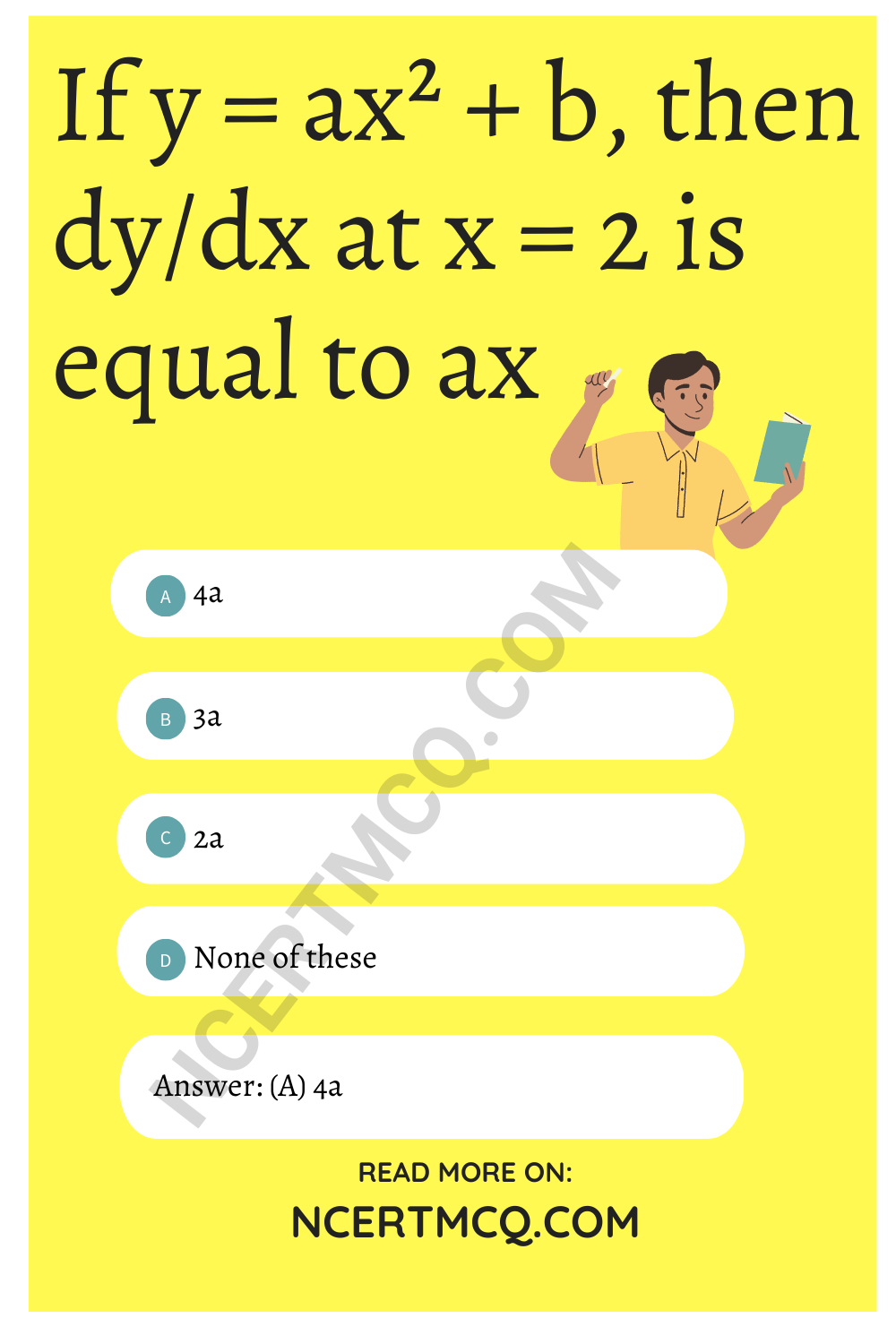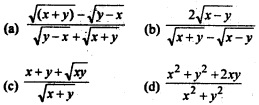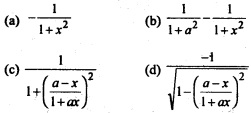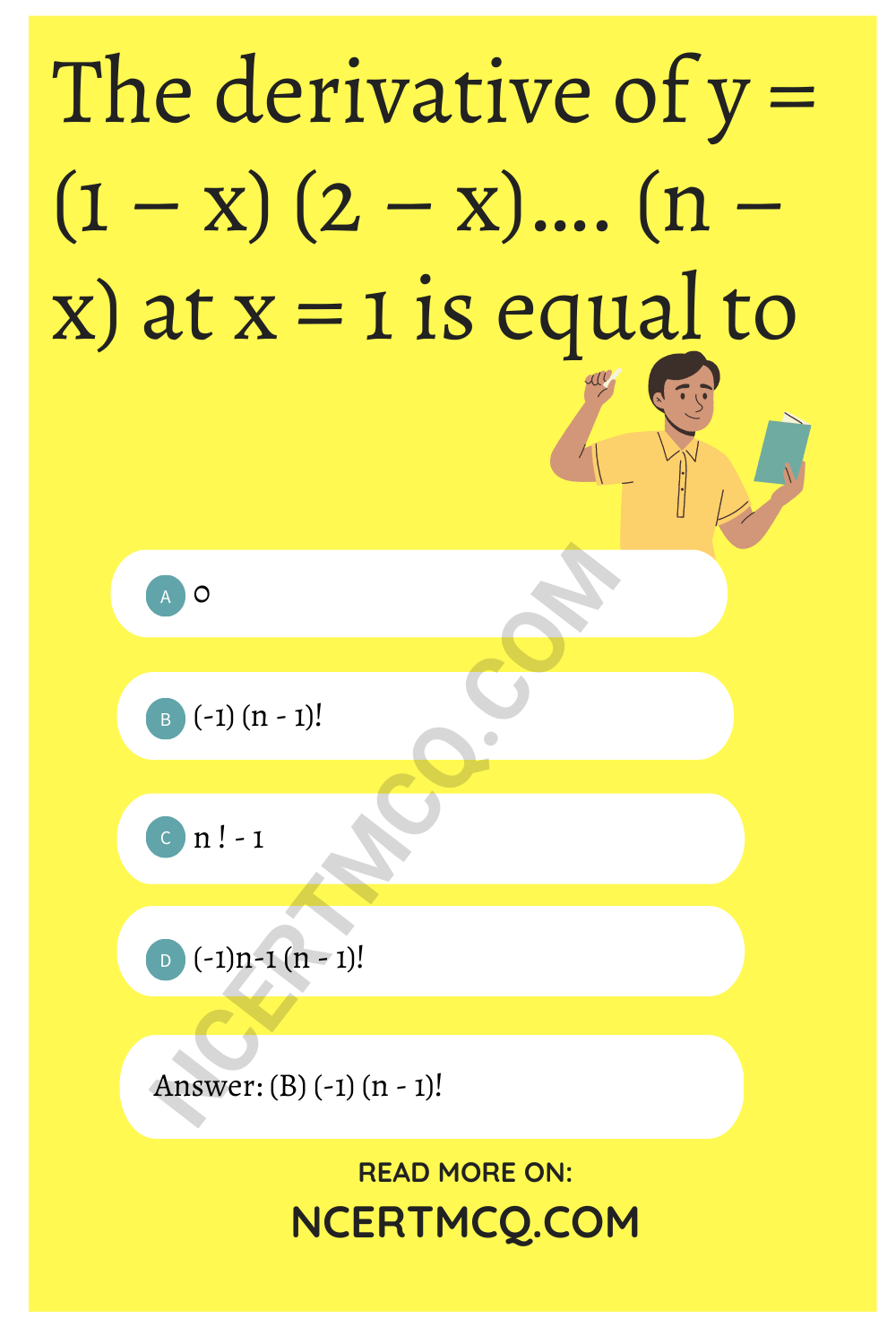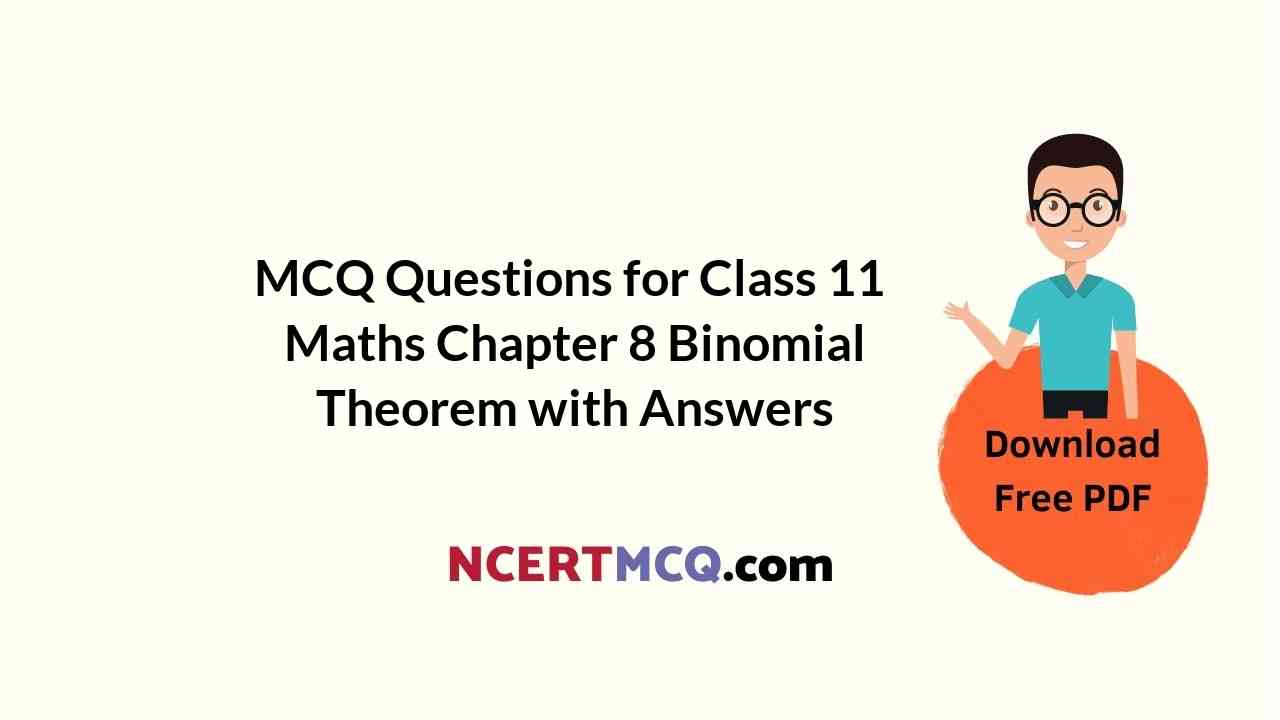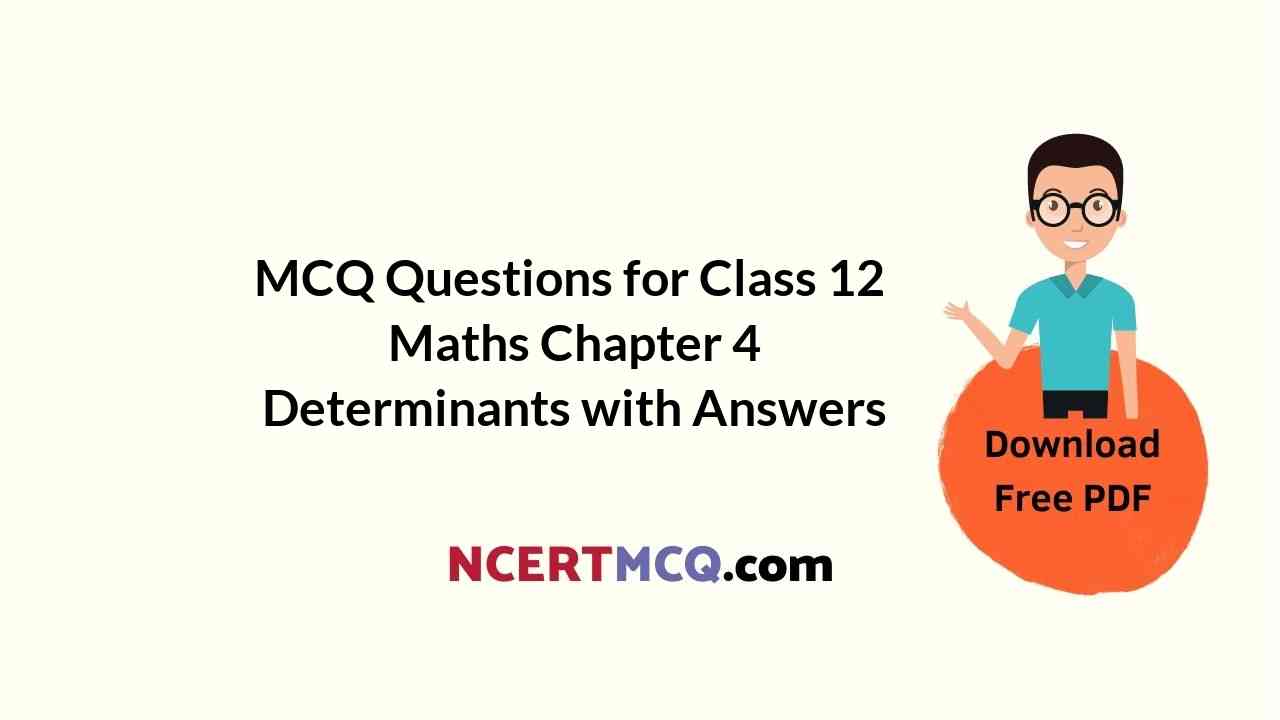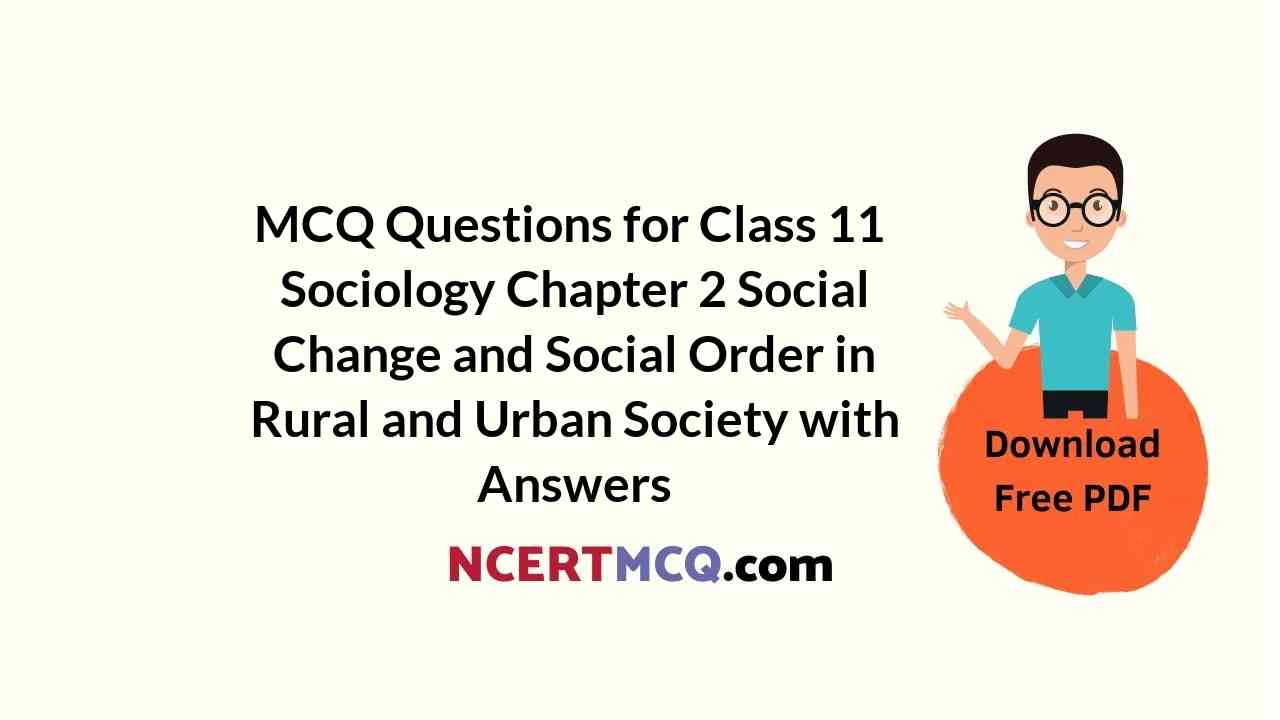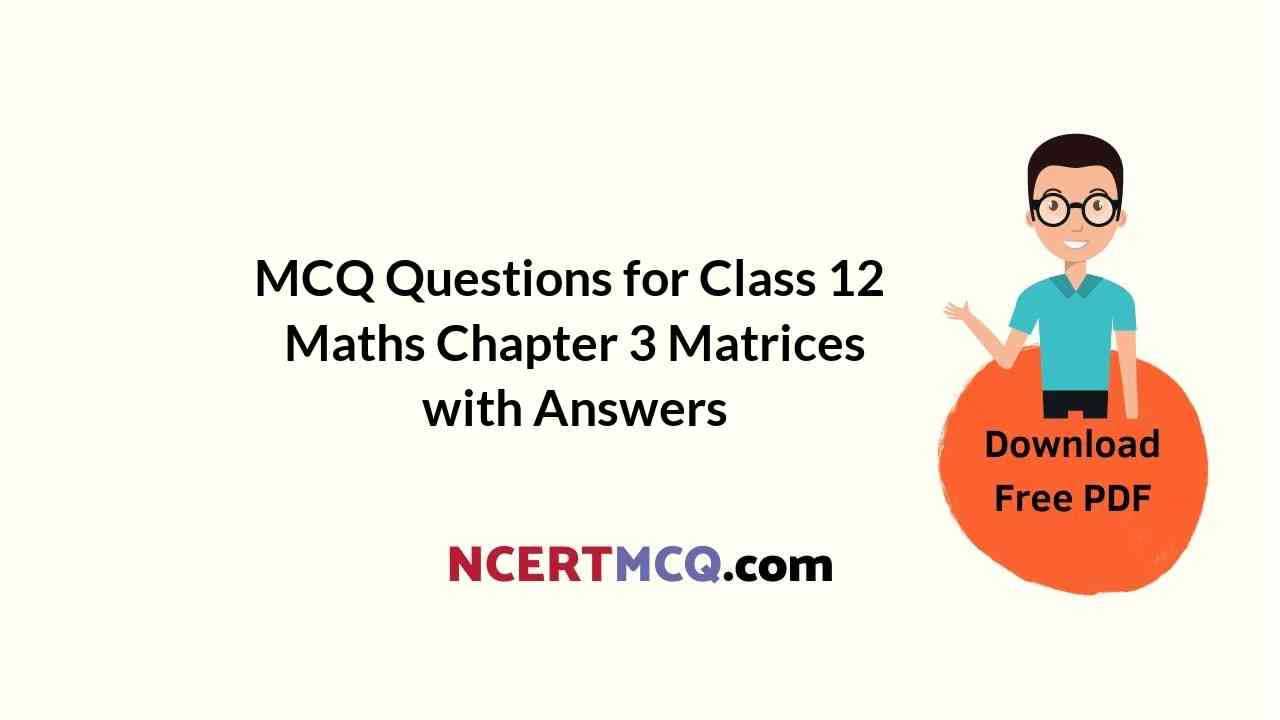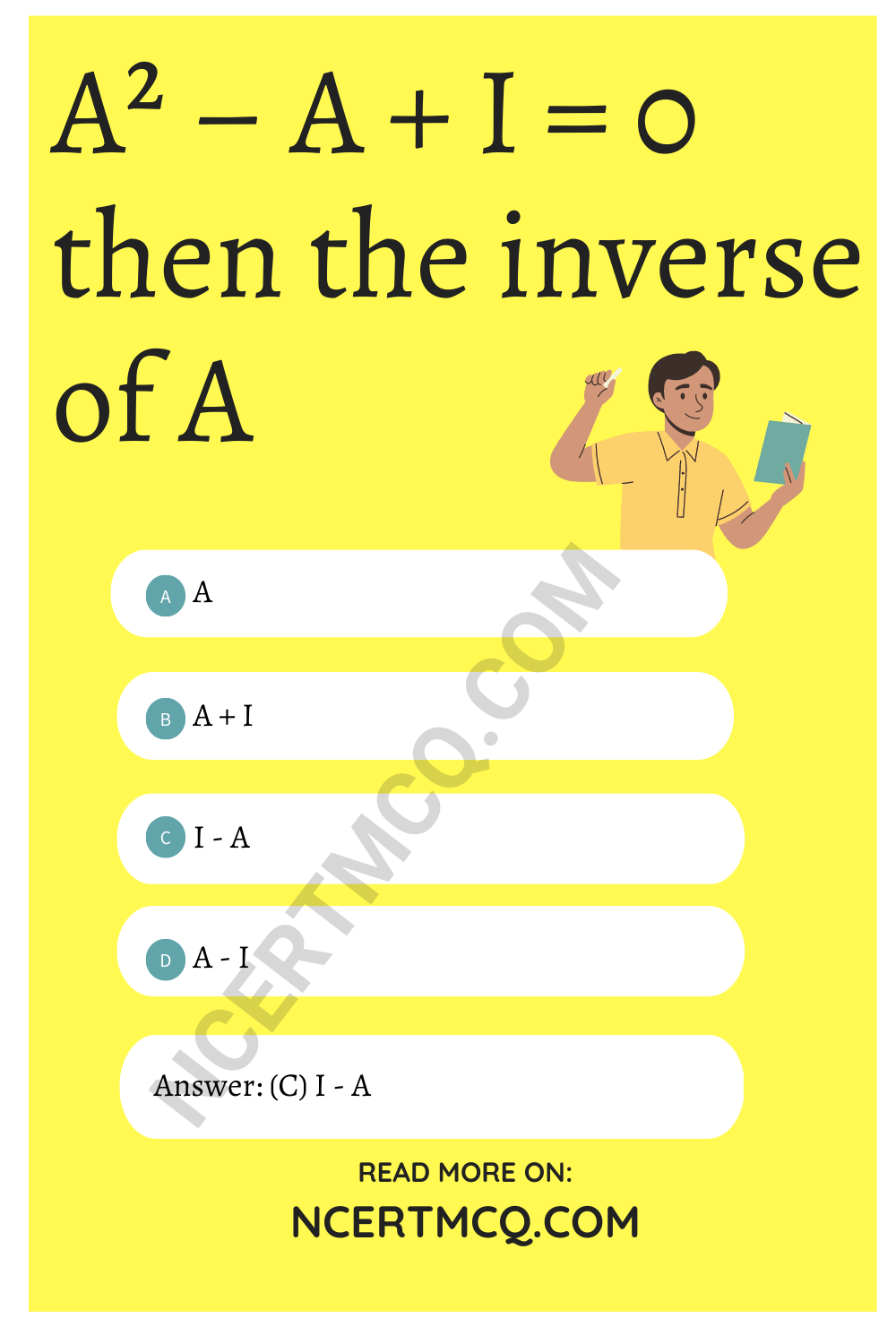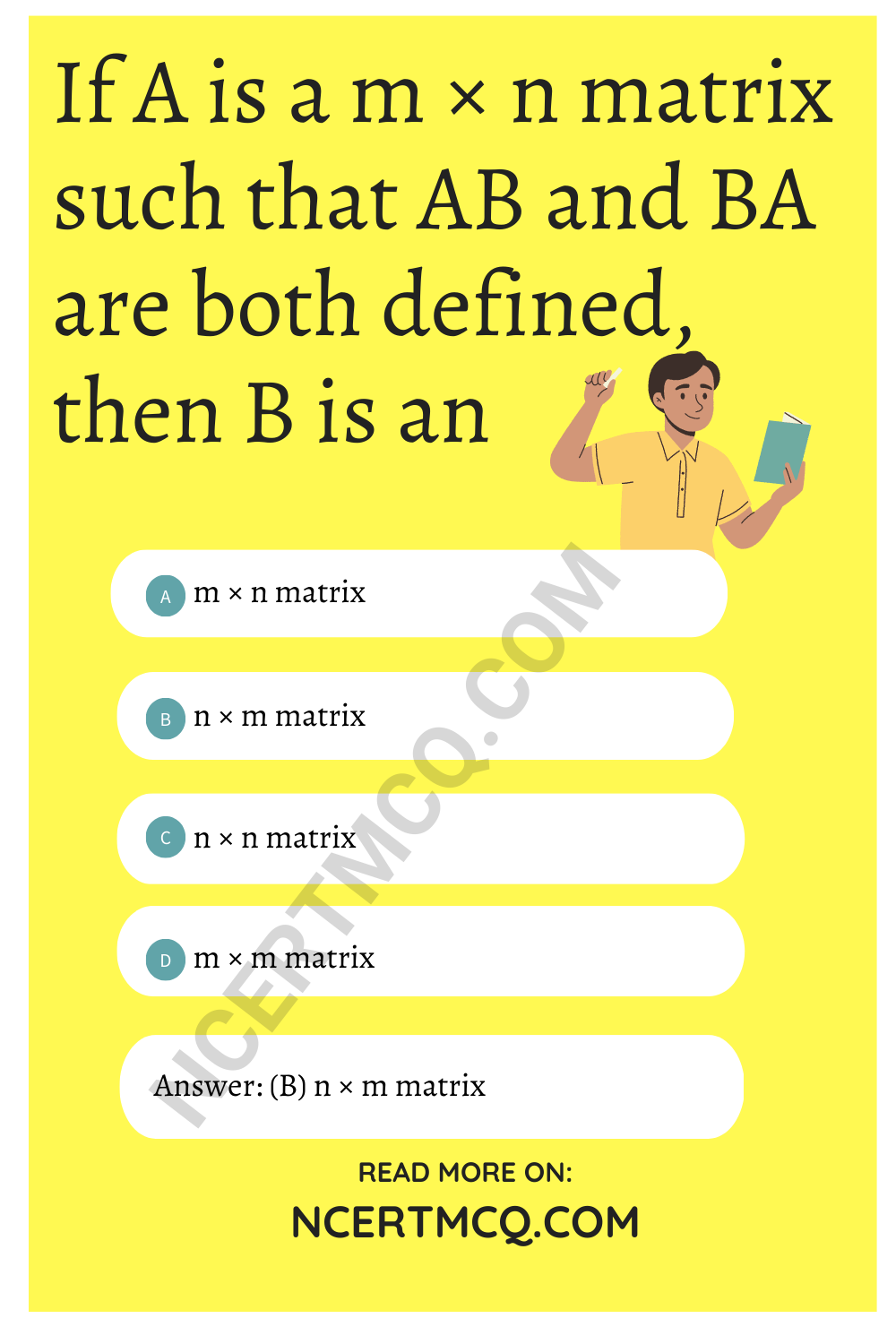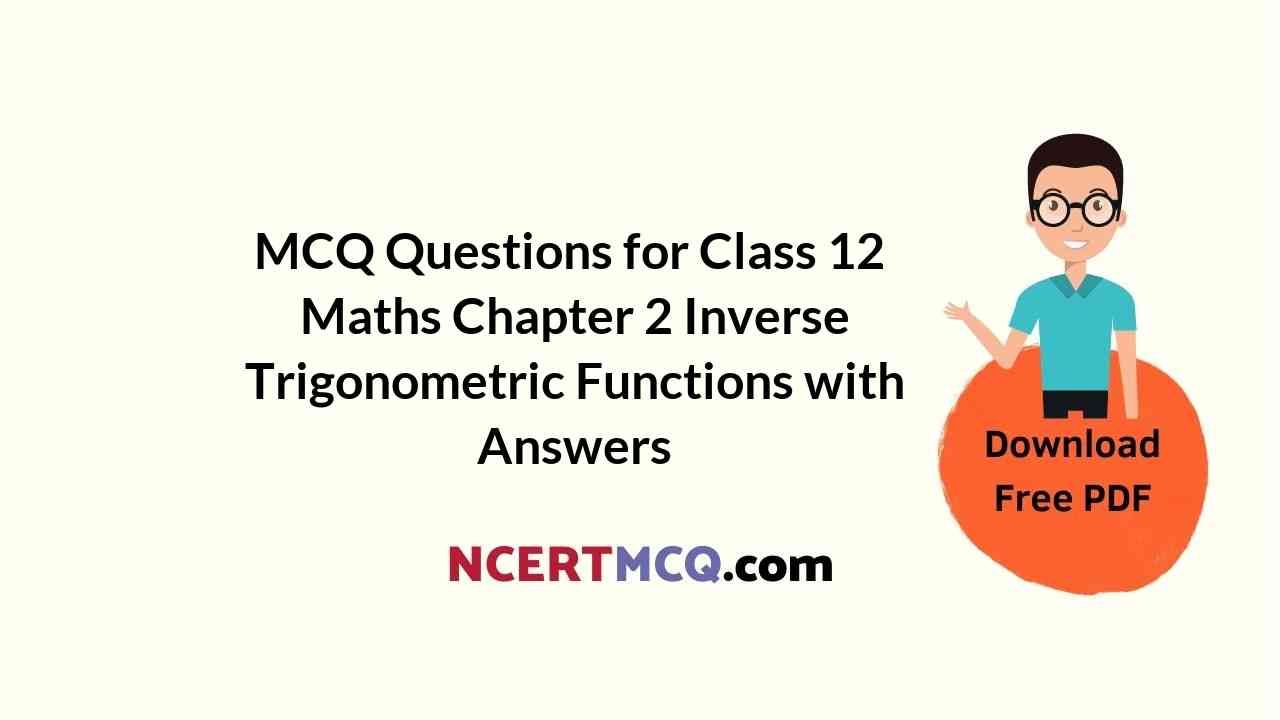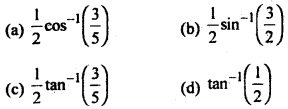Check the below NCERT MCQ Questions for Class 12 Maths Chapter 12 Linear Programming with Answers Pdf free download. MCQ Questions for Class 12 Maths with Answers were prepared based on the latest exam pattern. We have provided Linear Programming Class 12 Maths MCQs Questions with Answers to help students understand the concept very well.
Class 12 Maths Chapter 12 MCQ With Answers
Maths Class 12 Chapter 12 MCQs On Linear Programming
Linear Programming Class 12 MCQ Question 1.
Feasible region in the set of points which satisfy
(a) The objective functions
(b) Some the given constraints
(c) All of the given constraints
(d) None of these
Answer
Answer: (c) All of the given constraints
MCQ Questions On Linear Programming Class 12 Question 2.
Of all the points of the feasible region for maximum or minimum of objective function the points
(a) Inside the feasible region
(b) At the boundary line of the feasible region
(c) Vertex point of the boundary of the feasible region
(d) None of these
Answer
Answer: (c) Vertex point of the boundary of the feasible region
Linear Programming MCQ With Answers Pdf Question 3.
Objective function of a linear programming problem is
(a) a constraint
(b) function to be obtimized
(c) A relation between the variables
(d) None of these
Answer
Answer: (b) function to be obtimized
Linear Programming MCQ Class 12 Question 4.
A set of values of decision variables which satisfies the linear constraints and nn-negativity conditions of a L.P.P. is called its
(a) Unbounded solution
(b) Optimum solution
(c) Feasible solution
(d) None of these
Answer
Answer: (c) Feasible solution
Lpp MCQ Class 12 Question 5.
The maximum value of the object function Z = 5x + 10 y subject to the constraints x + 2y ≤ 120, x + y ≥ 60, x – 2y ≥ 0, x ≥ 0, y ≥ 0 is
(a) 300
(b) 600
(c) 400
(d) 800
Answer
Answer: (b) 600
Lpp MCQ Questions Class 12 Question 6.
The maximum value of Z = 4x + 2y subject to the constraints 2x + 3y ≤ 18, x + y ≥ 10, x, y ≤ 0 is
(a) 36
(b) 40
(c) 30
(d) None of these
Answer
Answer: (d) None of these
Lpp Class 12 MCQ Question 7.
In equation 3x – y ≥ 3 and 4x – 4y > 4
(a) Have solution for positive x and y
(b) Have no solution for positive x and y
(c) Have solution for all x
(d) Have solution for all y
Answer
Answer: (a) Have solution for positive x and y
Linear Programming Is A MCQ Question 8.
The maximum value of Z = 3x + 4y subjected to contraints x + y ≤ 40, x + 2y ≤ 60, x ≥ 0 and y ≥ 0 is
(a) 120
(b) 140
(c) 100
(d) 160
Answer
Answer: (b) 140
MCQ On Lpp Class 12 Question 9.
Maximize Z = 11 x + 8y subject to x ≤ 4, y ≤ 6, x + y ≤ 6, x ≥ 0, y ≥ 0.
(a) 44 at (4, 2)
(b) 60 at (4, 2)
(c) 62 at (4, 0)
(d) 48 at (4, 2)
Answer
Answer: (b) 60 at (4, 2)
MCQ Of Linear Programming Class 12 Question 10.
Maximize Z = 3x + 5y, subject to x + 4y ≤ 24, 3x + y ≤ 21, x + y ≤ 9, x ≥ 0, y ≥ 0
(a) 20 at (1, 0)
(b) 30 at (0, 6)
(c) 37 at (4, 5)
(d) 33 at (6, 3)
Answer
Answer: (c) 37 at (4, 5)
MCQ On Linear Programming Question 11.
Maximize Z = 4x + 6y, subject to 3x + 2y ≤ 12, x + y ≥ 4, x, y ≥ 0
(a) 16 at (4, 0)
(b) 24 at (0, 4)
(c) 24 at (6, 0)
(d) 36 at (0, 6)
Answer
Answer: (d) 36 at (0, 6)
MCQ On Linear Programming Class 12 Question 12.
Maximize Z = 7x + 11y, subject to 3x + 5y ≤ 26, 5x + 3y ≤ 30, x ≥ 0, y ≥ 0
(a) 59 at (\(\frac{9}{2}\), \(\frac{5}{2}\))
(b) 42 at (6, 0)
(c) 49 at (7, 0)
(d) 57.2 at (0, 5.2)
Answer
Answer: (a) 59 at (\(\frac{9}{2}\), \(\frac{5}{2}\))
MCQ Of Lpp Class 12 Question 13.
Maximize Z = 6x + 4y, subject to x ≤ 2, x + y ≤ 3, -2x + y ≤ 1, x ≥ 0, y ≥ 0
(a) 12 at (2, 0)
(b) \(\frac{140}{3}\) at (\(\frac{2}{3}\), \(\frac{1}{3}\))
(c) 16 at (2, 1)
(d) 4 at (0, 1)
Answer
Answer: (c) 16 at (2, 1)
Class 12 Maths Chapter 12 MCQ Question 14.
Maximize Z = 10 x1 + 25 x2, subject to 0 ≤ x1 ≤ 3, 0 ≤ x2 ≤ 3, x1 + x2 ≤ 5
(a) 80 at (3, 2)
(b) 75 at (0, 3)
(c) 30 at (3, 0)
(d) 95 at (2, 3)
Answer
Answer: (d) 95 at (2, 3)
Linear Programming MCQs Question 15.
Z = 20x1 + 202, subject to x1 ≥ 0, x2 ≥ 0, x1 + 2x2 ≥ 8, 3x1 + 2x2 ≥ 15, 5x1 + 2x2 ≥ 20. The minimum value of Z occurs at
(a) (8, 0)
(b) (\(\frac{5}{2}\), \(\frac{15}{4}\))
(c) (\(\frac{7}{2}\), \(\frac{9}{4}\))
(d) (0, 10)
Answer
Answer: (c) (\(\frac{7}{2}\), \(\frac{9}{4}\))
Linear Programming MCQ Class 12 Question 16.
Z = 6x + 21 y, subject to x + 2y ≥ 3, x + 4y ≥ 4, 3x + y ≥ 3, x ≥ 0, y ≥ 0. The minimum value of Z occurs at
(a) (4, 0)
(b) (28, 8)
(c) (2, \(\frac{7}{2}\))
(d) (0, 3)
Answer
Answer: (c) (2, \(\frac{7}{2}\))
Linear Programming Class 12 MCQ Questions Question 17.
The corner point of the feasible region determined by the system of linear constraints are (0, 0), (0, 40), (20, 40), (60, 20), (60, 0). The objective function is Z = 4x + 3y.
Compare the quantity in Column A and Column B
| Column A | Column B |
| Maximum of Z | 325 |
(a) The quantity in column A is greater
(b) The quantity in column B is greater
(c) The two quantities are equal
(d) The relationship cannot be determined On the basis of the information supplied
Answer
Answer: (b) The quantity in column B is greater
Question 18.
The feasible region for a LPP is shown shaded in the figure. Let Z = 3x – 4y be the objective function. Minimum of Z occurs at
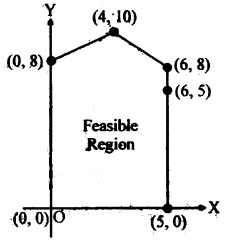
(a) (0, 0)
(b) (0, 8)
(c) (5, 0)
(d) (4, 10)
Answer
Answer: (b) (0, 8)
Question 19.
Refer to Question 18 maximum of Z occurs at
(a) (5, 0)
(b) (6, 5)
(c) (6, 8)
(d) (4, 10)
Answer
Answer: (a) (5, 0)
Question 20.
Refer to Question 18 (Maximum value of Z+ Minimum value of Z) is equal to
(a) 13
(b) 1
(c) -13
(d) -17
Answer
Answer: (d) -17
We hope the given NCERT MCQ Questions for Class 12 Maths Chapter 12 Linear Programming with Answers Pdf free download will help you. If you have any queries regarding Linear Programming CBSE Class 12 Maths MCQs Multiple Choice Questions with Answers, drop a comment below and we will get back to you soon.
Class 12 Maths MCQ:
- Relations and Functions Class 12 MCQ
- Inverse Trigonometric Functions Class 12 MCQ
- Matrices Class 12 MCQ
- Determinants Class 12 MCQ
- Continuity and Differentiability Class 12 MCQ
- Application of Derivatives Class 12 MCQ
- Integrals Class 12 MCQ
- Application of Integrals Class 12 MCQ
- Differential Equations Class 12 MCQ
- Vector Algebra Class 12 MCQ
- Three Dimensional Geometry Class 12 MCQ
- Linear Programming Class 12 MCQ
- Probability Class 12 MCQ
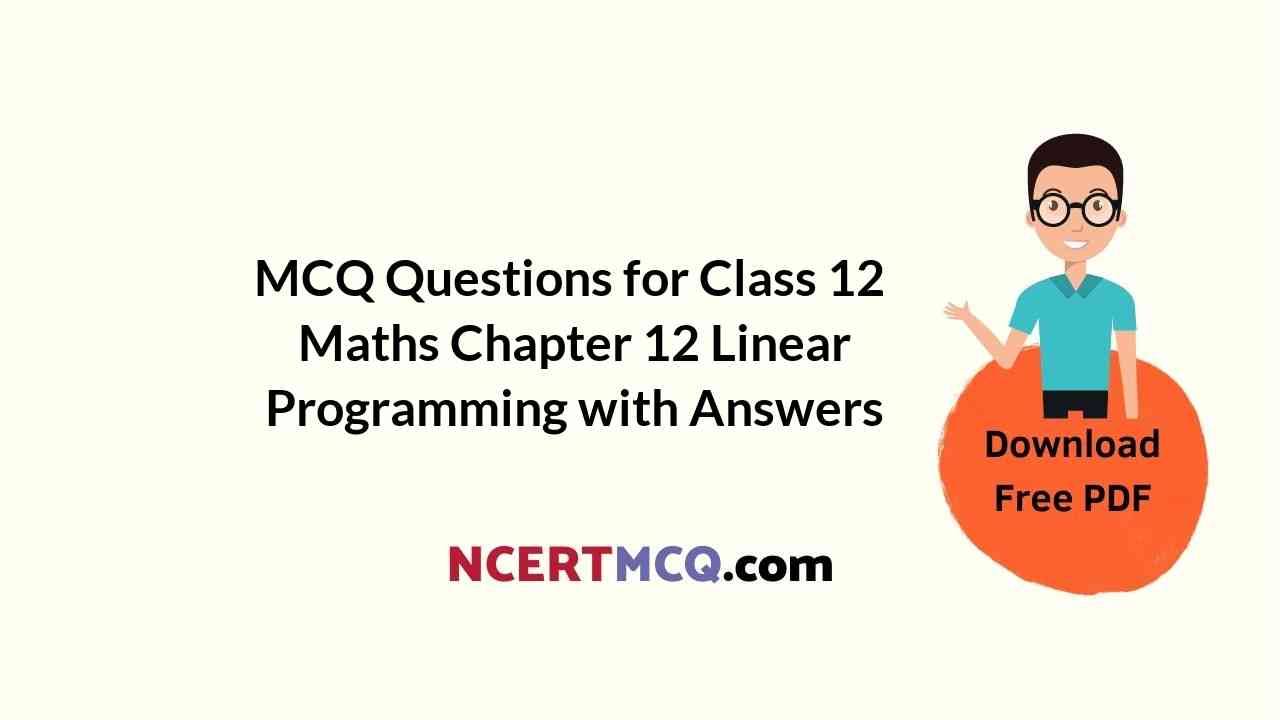
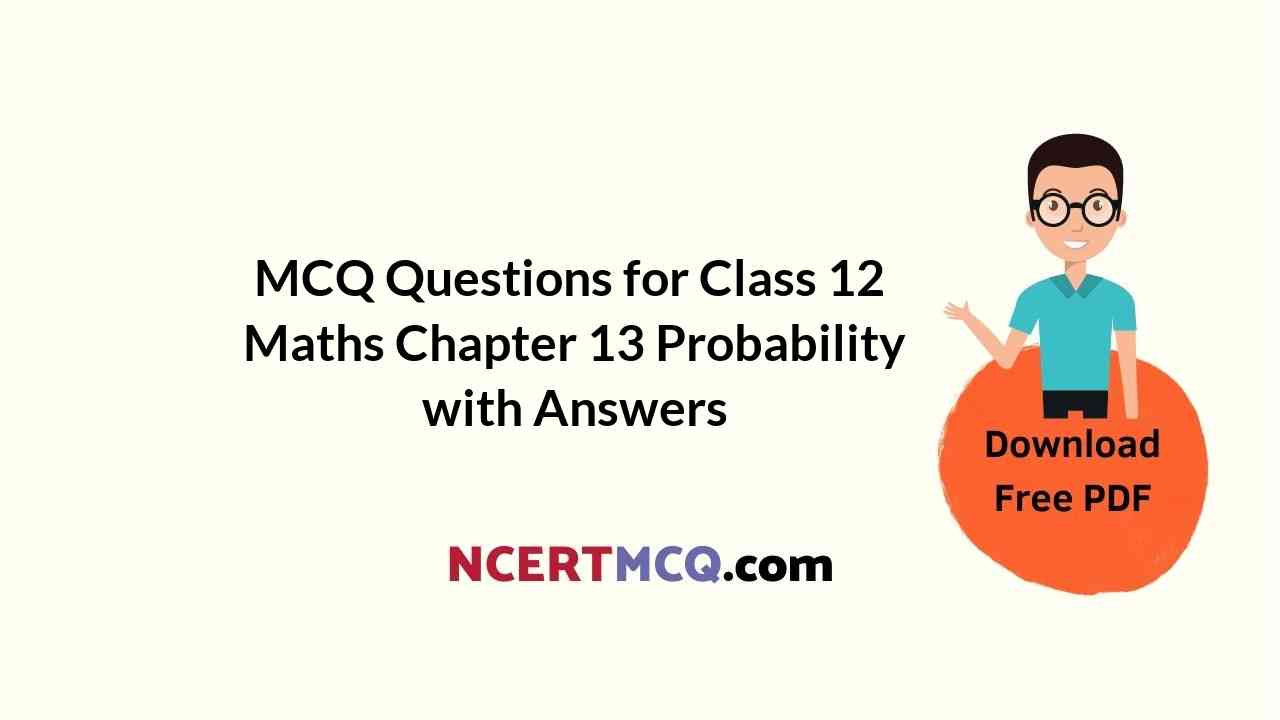
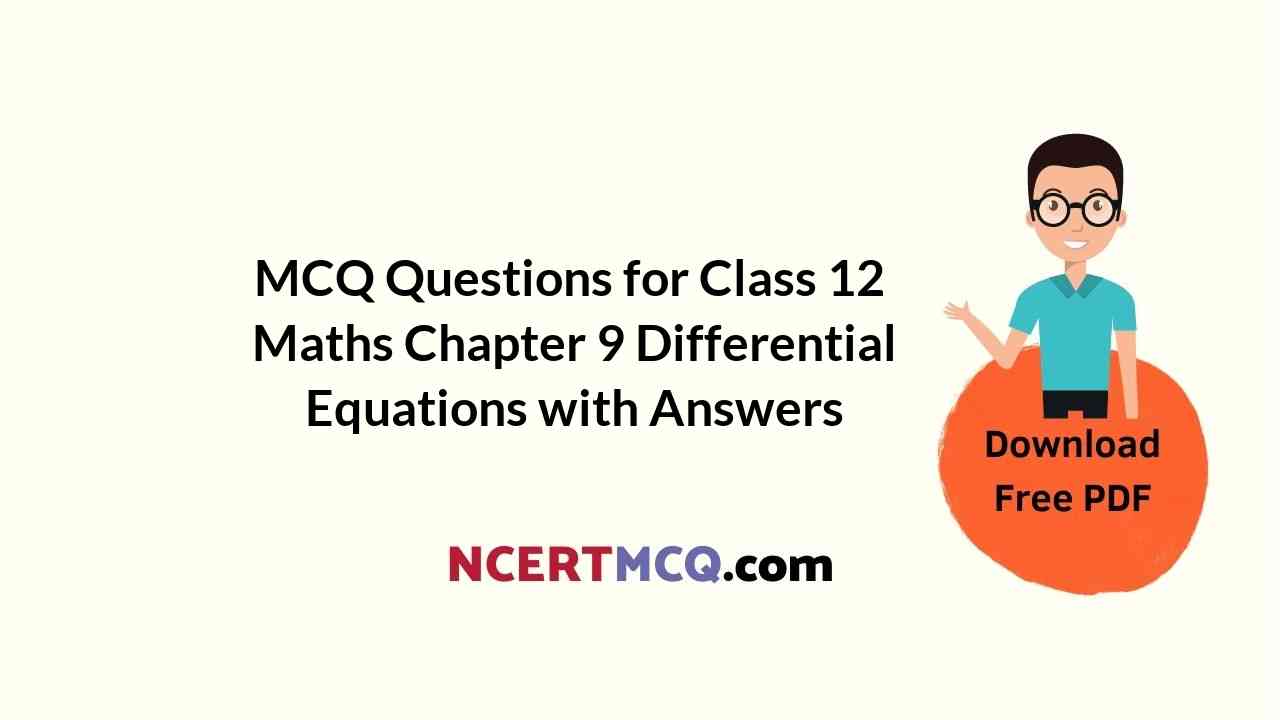
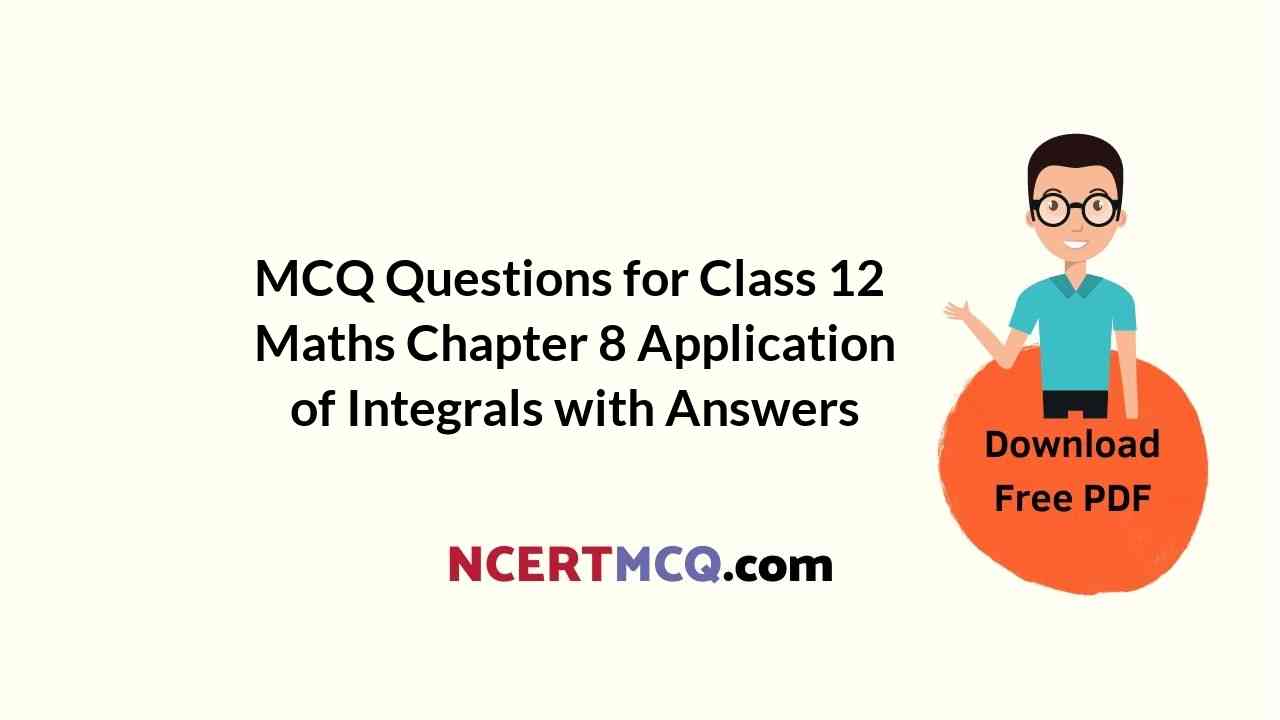

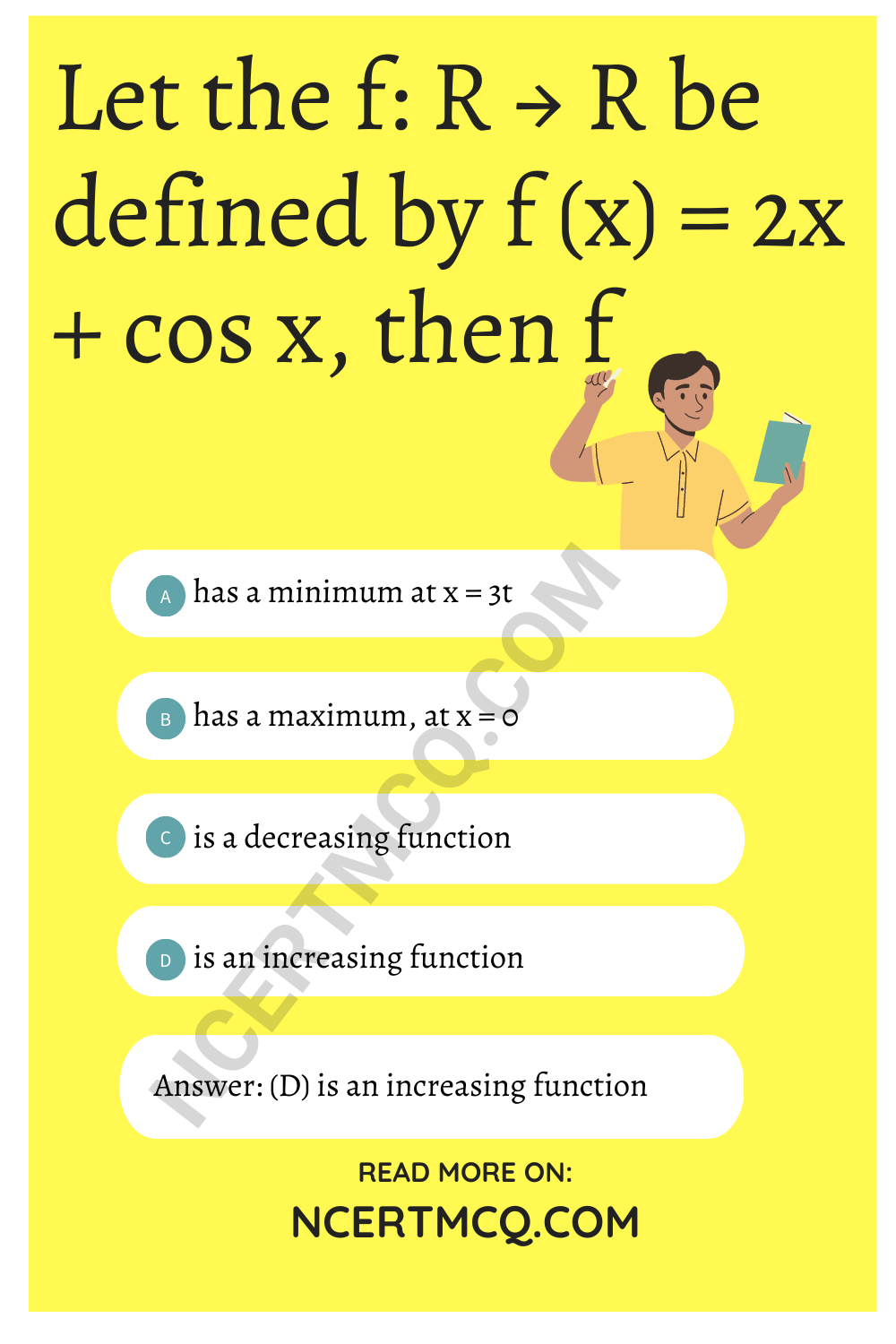
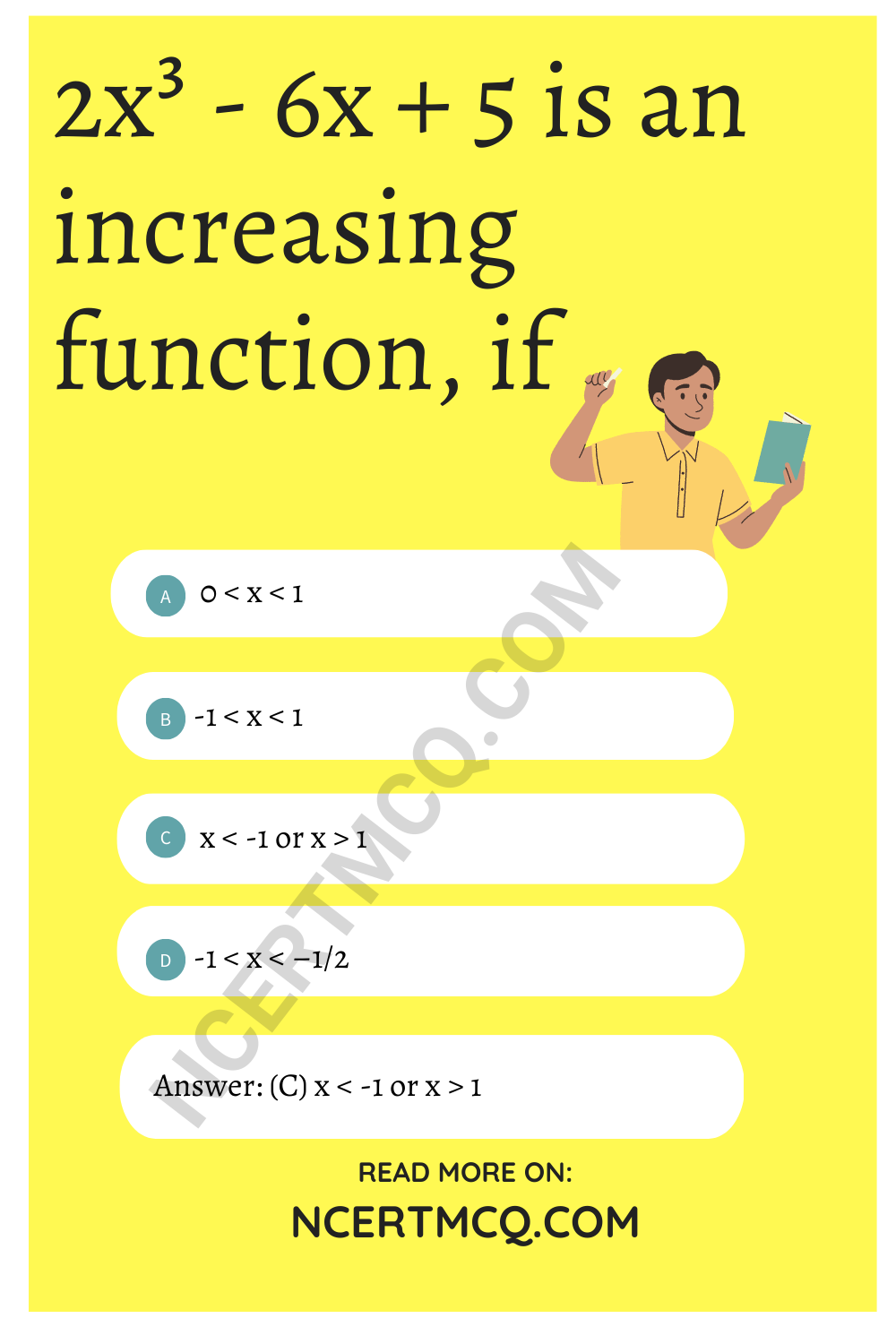

 is continuous at x = \(\frac{π}{2}\), then
is continuous at x = \(\frac{π}{2}\), then
